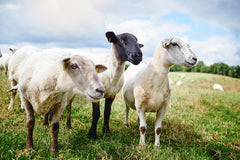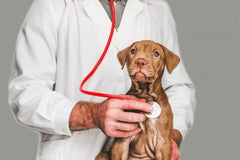
Treatment Options for Foot and Mouth Disease in Cows
Foot and mouth disease (FMD) is an acutely infectious and highly lethal viral disease commonly prevalent in cattle, pigs, sheep, goats, and other cloven-footed animals. This disease also leads to massive loss since the affected livestock animals produce little milk, lose body weight, and are sometimes unable to move and be sold in the market. Like cattle, foot and mouth disease in livestock is complex, and few medicines can be administered to the animals to cure it. However, there are ways to stop or control the spread of the disease in your animals.
/*! elementor - v3.22.0 - 26-06-2024 */
.elementor-heading-title{padding:0;margin:0;line-height:1}.elementor-widget-heading .elementor-heading-title[class*=elementor-size-]>a{color:inherit;font-size:inherit;line-height:inherit}.elementor-widget-heading .elementor-heading-title.elementor-size-small{font-size:15px}.elementor-widget-heading .elementor-heading-title.elementor-size-medium{font-size:19px}.elementor-widget-heading .elementor-heading-title.elementor-size-large{font-size:29px}.elementor-widget-heading .elementor-heading-title.elementor-size-xl{font-size:39px}.elementor-widget-heading .elementor-heading-title.elementor-size-xxl{font-size:59px}
Understanding Foot and Mouth Disease Symptoms
Early identification is one of the main factors that may help contain foot mouth disease in cattle. It is equally important to understand the signs that may show the presence of the parasitic infestation so that further contact with the veterinarian may be made. Commonfoot and mouth disease symptoms include:- Sudden high fever
- Salivation, hypersalivation, and having foam coming out of the mouth
- Small bumps on the tongue, lips, gums and around the hooves
- Swallowing problems and lameness caused by painful ulcers
Foot and Mouth Disease Treatment: Current Limitations
However, Cow foot and mouth disease treatment remains challenging because no particular antiviral drug exists. The virus follows its natural course, and the treatment is directed toward supporting the existing processes and avoiding disseminating the virus in the community. Here are some steps that can be taken:- Isolation and Quarantine: The initial measure involves separating sick animals from the rest of the flock or herd. All farms, which will be found positive, are expected to be put under quarantine to avoid worsening of the situation.
- Supportive Care: Giving infected animals pain relief, soft bedding, access to water, and good nutrition will ensure they do not struggle during the healing process.
- Disinfection: Involves cleaning objects, surfaces and vehicles identified to have come into contact with the virus to ensure it does not reoccur.
- Vaccination: Vaccination is essential in preventing disease transmission for optimum foot and mouth disease prevention. Thus, vaccines cannot give 100% protection, but they can lessen the intensity of symptoms, viral production, and transmitting capacity of the disease. Immunisation schedules depend on the place and the particular serotype among all existing viruses.
Foot and Mouth Disease Control Strategies
Many countries that have developed FMD control programs use a combination of strategies to eliminate FMD or prevent the disease from spreading. These strategies include:- Vaccination: Vaccination among target susceptible livestock populations comprises the mainstay of control programs.
- Surveillance: Routine checking and investigation of cases are essential in identifying early disease outbreaks.
- Movement Restrictions: Measures such as regulation on the transport of animals within the infected areas or between the affected regions can assist in controlling the disease’s spread.
- Stamping Out: In some circumstances, especially in countries that were not reporting FMD cases, the infected and in-contact animals may be killed to avoid further transmission. It is a tough call here, but there is no harm in making it sometimes if the general livestock business is at stake.
Importance of Biosecurity for Foot and Mouth Disease Prevention
Implementing biosecurity measures to avoid getting the disease onto the farm is crucial. Here are some essential biosecurity practices to implement:- Restrict access to your farm: Maintain restricted entry in the particular zone or area where the work is being conducted and allow only necessary equipment and people.
- Quarantine new animals: New animals should be isolated for some time and observed regularly for any signs of the disease before they are mixed with the rest of the herd.
- Maintain good hygiene: Clean boots, clothing, and equipment with disinfectants that may have direct contact with animals on a prescribed schedule.
- Control wildlife access: Reduce your chances of exposure of your cattle to wild animals like deer and pigs.
- Report any suspicious signs: If you suspect foot and mouth disease among cattle, consult your veterinarian or regional animal health authorities immediately.
Foot and Mouth Disease Research and Development
Continuous efforts are being made to discover better hand, foot, and mouth treatments and produce better vaccines. Some promising areas of research include:- Consequently, more effective vaccines for different types of human coronavirus are needed.
- Considering the necessity of administering antiviral drugs to reduce the duration of the disease.
- Exploring vaccines and other products that may prevent the virus from circulating even if animals get infected.







